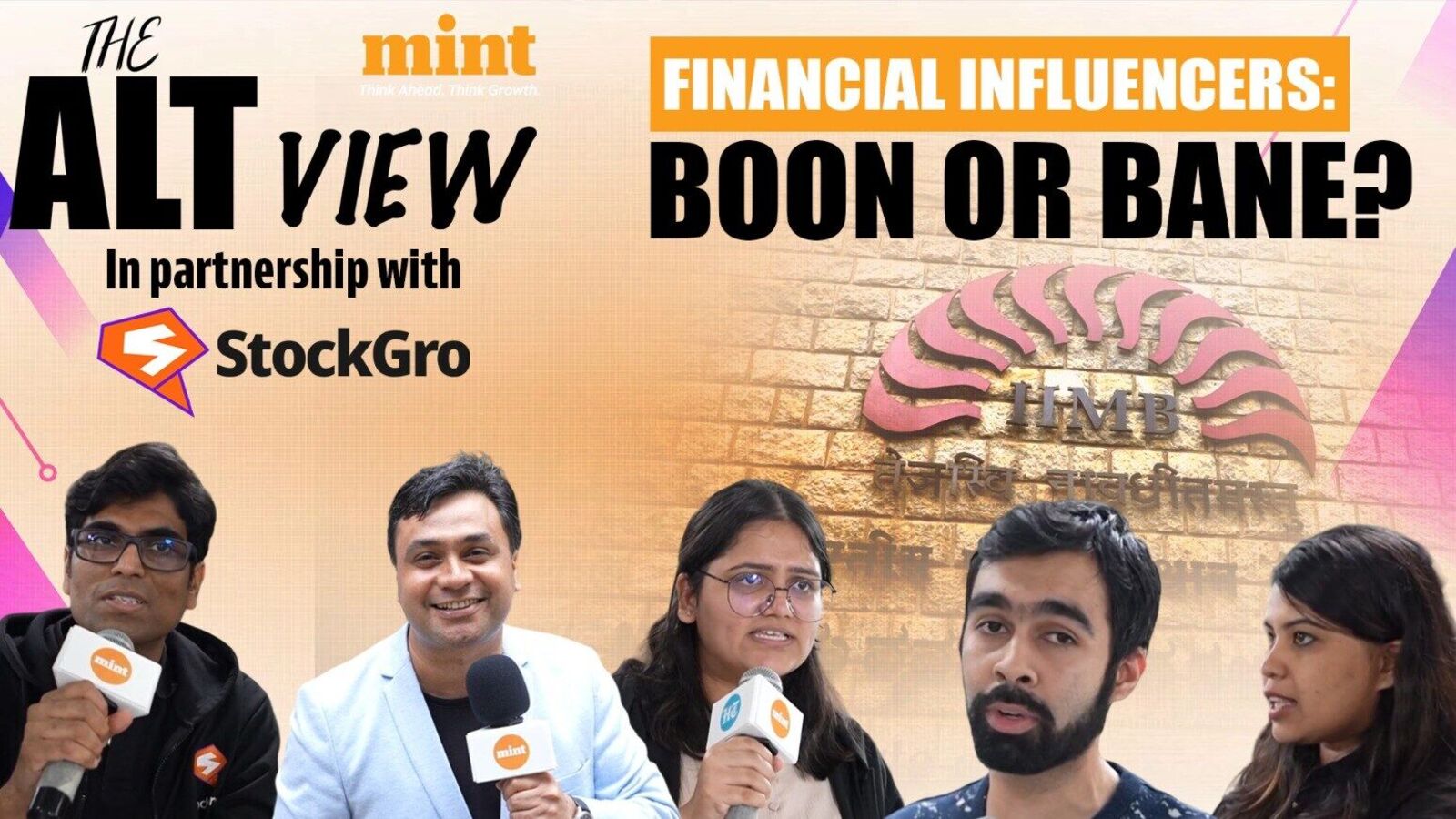The growing influence of finance Influencersor “fin-fluencers,” on social media has sparked a lively debate about their role in shaping young people’s investment decisions.
In a thought-provoking episode of “The ALT View” presented by StockGro, students from IIM Bangalore discussed this emerging phenomenon and its implications with industry experts Ajay Lakhotia, CEO and Founder of StockGro, and Anirudh Dhawan, Professor of Finance at IIM Bangalore.
The Alt View is a youth-centric web show where India’s leading business daily Mint speaks to students and youth about politics, technology and emerging issues that influence their lives. The show is hosted by Abhinav Trivedi, Deputy Editor, LiveMint.
Click here to watch the full episode,
Filling the financial gap
Drawing on his experience in building India’s largest stock market education community, Ajay Lakhotia pointed out that there is a lack of financial education in our ecosystem. “Your family doesn’t teach you how to invest money, they teach you how to save. This gap is what most influencers are trying to fill.”
Need for regulation
As students at IIM-Bangalore discussed this trend, one group expressed that advice from financial influencers often comes with a caveat. Influencers promote specific products, such as courses or investment Strategies that can lead to biased recommendations. They also recalled cases where financial influencers shared incorrect financial advice and then deleted the videos. They were interested to see that financial influencers leveraged emotions such as greed and fear to boost their sales.
Drawing on this perspective, Mr. Lakhotia noted that financial influencers have gained significant popularity by narrating investment strategies as a “life hack” – an appealing and accessible approach that contrasts with the more complex methods typically employed by traditional BFSI players.
“COVID-19 has further changed this spectrum by adding an element of boredom. People have a lot more free time, so they now look for investment advice on Google and YouTube. SEBI “We can collaborate with financial influencers and spread financial education. Some of them are good and have a huge captive audience,” added Professor Dhawan.
Finally, students expressed that financial influencers need greater accountability through regulation, while BFSIs can simplify their information to help the masses.
As the debate continues, Lakhotia reiterates that financial influencers are filling a key gap in financial education, but warns of the need to build accountability to foster greater trust in their ecosystem. In this context, platforms like StockGro, which offer high-quality financial education and responsible advisory services, play an increasingly vital role.
Disclaimer: This article is part of Mint’s editorial series The Alt View. This episode is sponsored by StockGro.
Disclaimer:
The information contained in this post is for general information purposes only. We make no representations or warranties of any kind, express or implied, about the completeness, accuracy, reliability, suitability or availability with respect to the website or the information, products, services, or related graphics contained on the post for any purpose.
We respect the intellectual property rights of content creators. If you are the owner of any material featured on our website and have concerns about its use, please contact us. We are committed to addressing any copyright issues promptly and will remove any material within 2 days of receiving a request from the rightful owner.

